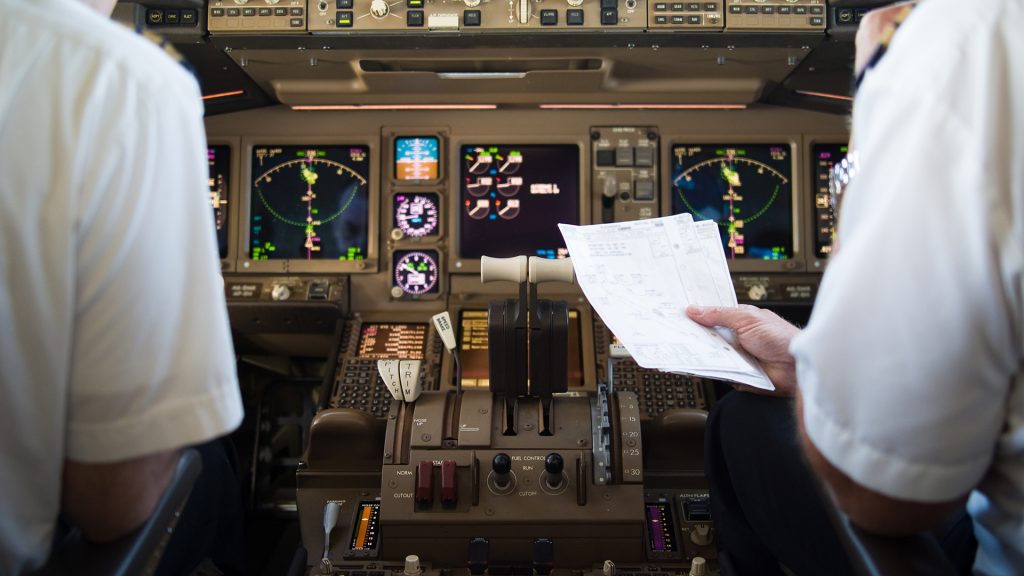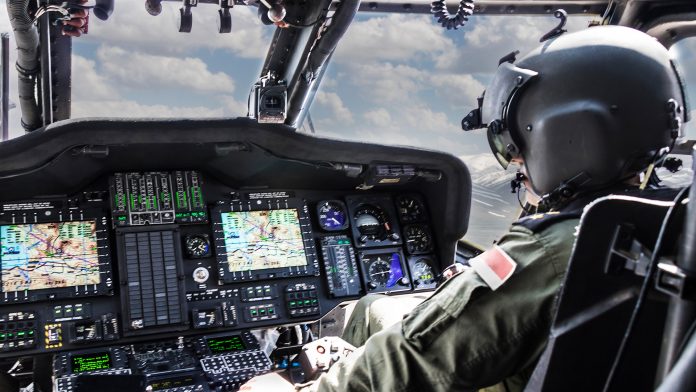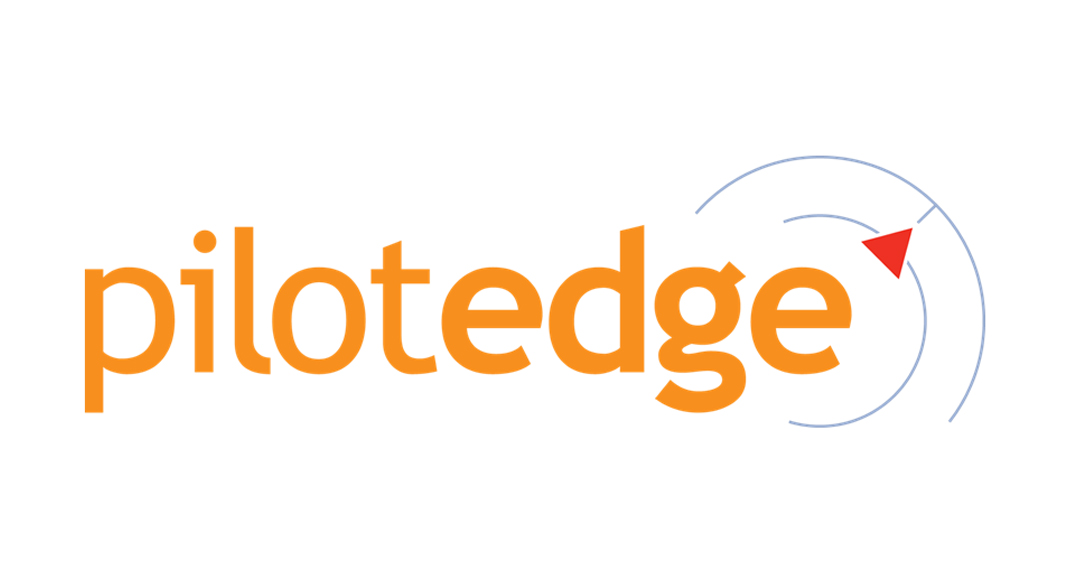The multiplatform distributed virtual training environment (MDVTE) is the only flight simulation experience comparable to operating an actual aircraft.
Flying an aircraft is a highly technical skill. Pilots require hundreds of hours of training and experience before they receive their commercial or airline transport pilot certificate. Flight simulations have long been used as a tool to help pilots become familiar with being in the cockpit, however they lack a crucial element of flying: communication with air traffic controllers.
When Keith Smith founded PilotEdge, he knew that connecting these flight simulations with air traffic control (ATC) was the emotional stimulus needed in order to accurately replicate flying and controlling an aircraft. PilotEdge software revolutionises the way departments of defence and flight schools train pilots with simulation by offering the missing piece of the puzzle – real-time, professional communications.
Creating the most realistic pilot experience
Recently, there have been many positive advancements in flight simulations that make practicing instrumental and emergency procedures more realistic, yet communications with ATC has never been one of them. PilotEdge bridges the gap between an online flying experience and real interaction with ATC for a true technical and emotional flight with their multiplatform distributed virtual training environment (MDVTE).
A realistic flying experience includes interacting with other pilots, communicating with ATC and real consequences for a pilot’s actions. When PilotEdge connects a simulator to their network, users see and hear other planes and speak to ATC on the radio through a connected headset – just as they would from the cockpit.
The radio system used is highly advanced to closely mirror real-world characteristics of flight. By using actual ATC transmitter locations, pilots and controllers benefit from line of sight considerations, including terrain masking and signal propagation. By interacting with other pilots, ground control and ATC in real-time with real people, pilots across various different experience levels receive the most comprehensive training that is currently available.
How it works
PilotEdge software is an open sandbox where everyone from flight simulation enthusiasts to licensed pilots can populate the virtual air space. The physical location and nature of the connected devices does not limit the ability of the devices to be seen by other pilots. This ensures that each pilot can see any and all connected aircraft that are within visual range, as well as hear each other when they are on the same frequency and within range, mimicking real-life conditions.
In an instance where controllers are working many different positions at the same time, repeaters are enabled to permit pilots to hear other aircraft from other frequencies. This effectively reduces the number of radio blocks that would otherwise occur and continues to provide users with the best experience.
The use of real air traffic controller specialists (ATCS) directing users is what sets the MDVTE apart from traditional simulators. PilotEdge uses a controller standardisation and quality assurance process that largely mirrors that used by the Federal Aviation Administration (FAA). ATCS are periodically monitored numerous times per year by the Director of Quality Assurance (DQA). Additionally, the DQA conducts random observations of each ATCS in real-time and has access to audio recording of their previous sessions.
PilotEdge transforms what you can do with a flight simulation and breathes new life into what was a solitary and static world for the pilot. With all the technology you expect from a high-end slight simulator and the human touch of ATCS, pilots can practice their Bravo/Charlie/Delta transitions, file and receive instrument flight rules (IFR) or pop-up clearance and rehearse instrument approaches.
If an instructor needs to communicate with a supervisor or ATCS for real-time modification of the service being received, a Discord system exists for this immediate need for contact. Instructor pilots, interested stakeholders and PilotEdge ATCS, can discuss customers’ requests off-frequency for the best results possible. This could include something as major as closing an airport or runway, to asking for a hold.

Customising environments to meet the needs of diverse clients
The MDVTE is a completely scalable and flexible system ideal for commercial, educational and government facilities with the need to train both pilots and/or ATCS. PilotEdge allows for multiple ATCS to be connected to the system at the same time, handling various sectors and frequencies. It uses a proprietary hierarchical voice routing system that allows for an ATCS to manage many positions from a single virtual post. If a new ATCS plugs in to a position that is beneath another ATCS, the new ATCS will take ownership of their newly selected position and everything below it. The existing controller then continues to work their previous positions, down to, but not including, the new controller’s position.
The system also allows for multiple controllers in disparate locations to be connected to the server simultaneously, with a similar hierarchical delegation of airspace among the controllers. Each controller can cover multiple sectors at once through a single virtual position, allowing pilots to use real-world frequencies for the area regardless of the number of on-duty controllers. Remote Pilot Operator software is also available to generate multiple target aircraft to train ATCS with airspace familiarisation. In a learning environment and style similar to what is used by the FAA to train controllers, ATCS interact with pilots on the simulation and ground control for first-hand experience with the language, intricacies and precision required for the position. While the environment is safe, ATCS experience the real consequences of their interactions where they can learn from their mistakes and enhance their skills.
Flight schools and government facilities have the option to populate their own airspace in a closed loop or have portions of the environment staffed by PilotEdge controllers. Air Force controllers continue to use the software to control the relevant tower and Radar Approach Control System (RAPCON) but interact with ATCS provided by PilotEdge. Aircraft can easily be handed from the PilotEdge controllers to Air Force controllers and vice versa depending on their needs and number of participating users. Of course, this system is only helpful to large organisations and government sectors if progress of pilots can be tracked and measured.
PilotEdge’s infrastructure allows for controllers to submit pilot deviations for quality assurance review, including account information, date/time of incident, origin/destination airport and the overall severity and nature of the issue. The data is summarised in a text report and emailed to the Ops team on a nightly basis as well as being available on an internal, secured quality assurance website. MDTVE also allows for recording and playback of profiles, including synchronisation and groupings of recording of unequal lengths. The aircraft being played back appears on the network in a manner that is indistinguishable from live traffic to provide for a target rich environment.
When pilots and ATCS utilise PilotEdge, they operate in a stimulating environment where there are consequences for their actions. Interacting with other pilots and ATC connects the technical aspects of flying a simulation with the emotional, stable decision making between multiple parties in the sky and on the ground. As a highly customisable system, both private and public sectors utilise PilotEdge to train, retain and educate pilots and ATCS.
A simulation accessible to flight enthusiasts, professional pilots, and everyone in between
At PilotEdge, we have created software for anyone, and everyone interested in flight, and that is why the program is simple and easy to use. All an interested individual needs is a headset, a compatible flight simulator and an internet connection. Once connected with PilotEdge, they are in the system and ready to communicate with controllers and other aircraft.
As a standalone pilot client for the PilotEdge network, the PilotEdge appliance is easily integrated with existing legacy systems. It is driven through a network protocol that is fully documented in an interface control document which can be provided upon request. This allows for any simulator to participate on the PilotEdge network by sending position information and other data to this platform.
Otherwise, native support exists for Lockheed Martin Prepar3D (v2.2+) and X-Plane 9+ for Mac, Windows, and Linux. PilotEdge is on a mission to make the most comprehensive flight simulation experience possible for home users and defence departments. Whether it is used for pilot training, aviation English training, or more exotic applications such as cutting-edge avionics development or human factors research, the MDVTE brings a new level of realism to the simulated cockpit.
The service is currently available to the general public in the western half of the United States at some 85 towered airports and several thousand non-towered fields, 15 hours a day, seven days a week, as well as in additional undisclosed locations with custom schedules for various commercial customers.
With a program that encompasses the most important aspects of flying (technical knowledge, decision-making and communications), pilots of all experience levels receive the most comprehensive practical simulation to the benefit of airlines, flight schools and defence departments.








